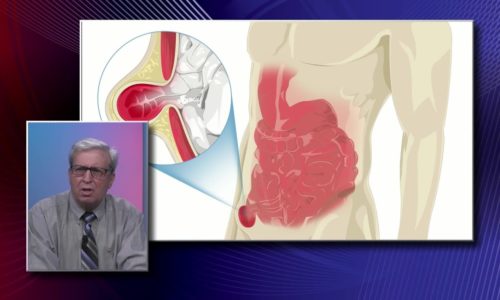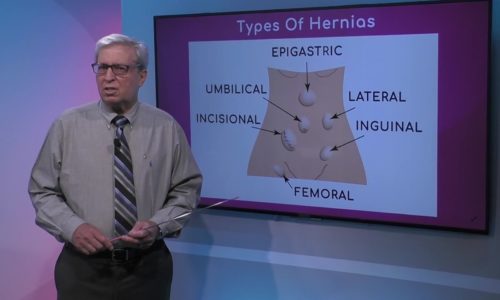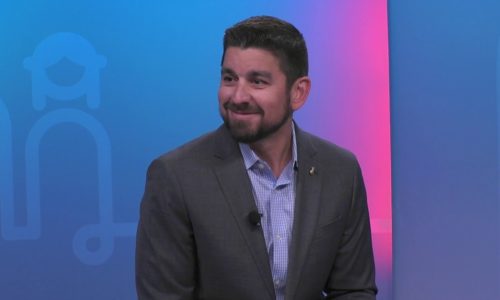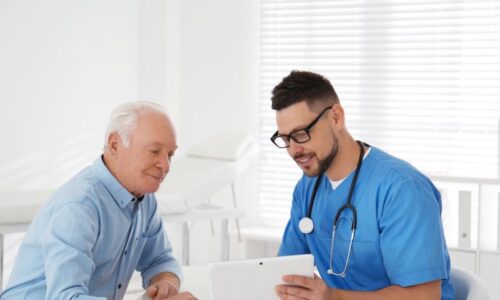Symptoms of Sepsis Interview With Sandra Amador |
Sepsis is an infection that reaches the bloodstream. It can cause changes in blood pressure and mental status, and requires immediate medical attention, explains Sandra Amador, ARNP, Medical Surgical Nurse with Baptist Hospital of Miami.
The symptoms are: shivering, fever, pain, discomfort, sleepy, short of breath and pale or discolored skin, among others.
She affirms sepsis is more common in geriatric population because of their chronic conditions.
Transcript
Chattering unmentioned substance what is that what is the condition sepsis is an infection that reaches the bloodstream that actually causes obviously changes in mental status it causes changes in blood pressure it’s it’s something that is critical that it actually requires immediate medical attention antibiotics and so forth and some of those symptoms are like we have here on our PowerPoint is basically shivering fever very cold extreme pain sleepy difficulty to to arouse they says I feel like I might die size of one of the common symptoms that are here yes yes they feel very sick and again a lot of the time these patients have tried like home remedies and they don’t seem to feel better so this is a sign where it needs to trigger a single say I need to go to the hospital and sepsis is something that we normally see in the geriatric more in the geriatric community we see it in all population but it’s obviously seen more in the geriatric population because of their chronic conditions a lot of times they test that oh they’re feeling tired today they’re not you know they’re normally not themselves they’re just probably been around and so forth they don’t they don’t put that much effort you know as far as identifying but it’s something critical that needs to be addressed right away and there’s many types of invasive devices and procedures to treat patients you know you have catheters and ventilators are the elderly more prone to infection because of these sort of devices and invasive procedures they are prone to these infections because of their chronic illnesses that are being cared for however these devices obviously can also attend to infection to the rest of the population as well like for example urinary indwelling catheters patients are an event later that they’re being are helped to be right breathing central lines or lines that actually are directly giving medication to the heart you
Sepsis is an infection that reaches the bloodstream. It can cause changes in blood pressure and mental status, and requires immediate medical attention, explains Sandra Amador, ARNP, Medical Surgical Nurse with Baptist Hospital of Miami.
The symptoms are: shivering, fever, pain, discomfort, sleepy, short of breath and pale or discolored skin, among others.
She affirms sepsis is more common in geriatric population because of their chronic conditions.
Transcript
Chattering unmentioned substance what is that what is the condition sepsis is an infection that reaches the bloodstream that actually causes obviously changes in mental status it causes changes in blood pressure it’s it’s something that is critical that it actually requires immediate medical attention antibiotics and so forth and some of those symptoms are like we have here on our PowerPoint is basically shivering fever very cold extreme pain sleepy difficulty to to arouse they says I feel like I might die size of one of the common symptoms that are here yes yes they feel very sick and again a lot of the time these patients have tried like home remedies and they don’t seem to feel better so this is a sign where it needs to trigger a single say I need to go to the hospital and sepsis is something that we normally see in the geriatric more in the geriatric community we see it in all population but it’s obviously seen more in the geriatric population because of their chronic conditions a lot of times they test that oh they’re feeling tired today they’re not you know they’re normally not themselves they’re just probably been around and so forth they don’t they don’t put that much effort you know as far as identifying but it’s something critical that needs to be addressed right away and there’s many types of invasive devices and procedures to treat patients you know you have catheters and ventilators are the elderly more prone to infection because of these sort of devices and invasive procedures they are prone to these infections because of their chronic illnesses that are being cared for however these devices obviously can also attend to infection to the rest of the population as well like for example urinary indwelling catheters patients are an event later that they’re being are helped to be right breathing central lines or lines that actually are directly giving medication to the heart you
Sepsis is an infection that reaches the bloodstream. It can cause changes in blood pressure and mental status, and requires immediate medical attention, explains Sandra Amador, ARNP, Medical Surgical Nurse with Baptist Hospital of Miami.
The symptoms are: shivering, fever, pain, discomfort, sleepy, short of breath and pale or discolored skin, among others.
She affirms sepsis is more common in geriatric population because of their chronic conditions.
Transcript
Chattering unmentioned substance what is that what is the condition sepsis is an infection that reaches the bloodstream that actually causes obviously changes in mental status it causes changes in blood pressure it’s it’s something that is critical that it actually requires immediate medical attention antibiotics and so forth and some of those symptoms are like we have here on our PowerPoint is basically shivering fever very cold extreme pain sleepy difficulty to to arouse they says I feel like I might die size of one of the common symptoms that are here yes yes they feel very sick and again a lot of the time these patients have tried like home remedies and they don’t seem to feel better so this is a sign where it needs to trigger a single say I need to go to the hospital and sepsis is something that we normally see in the geriatric more in the geriatric community we see it in all population but it’s obviously seen more in the geriatric population because of their chronic conditions a lot of times they test that oh they’re feeling tired today they’re not you know they’re normally not themselves they’re just probably been around and so forth they don’t they don’t put that much effort you know as far as identifying but it’s something critical that needs to be addressed right away and there’s many types of invasive devices and procedures to treat patients you know you have catheters and ventilators are the elderly more prone to infection because of these sort of devices and invasive procedures they are prone to these infections because of their chronic illnesses that are being cared for however these devices obviously can also attend to infection to the rest of the population as well like for example urinary indwelling catheters patients are an event later that they’re being are helped to be right breathing central lines or lines that actually are directly giving medication to the heart you
Sepsis is an infection that reaches the bloodstream. It can cause changes in blood pressure and mental status, and requires immediate medical attention, explains Sandra Amador, ARNP, Medical Surgical Nurse with Baptist Hospital of Miami.
The symptoms are: shivering, fever, pain, discomfort, sleepy, short of breath and pale or discolored skin, among others.
She affirms sepsis is more common in geriatric population because of their chronic conditions.
Transcript
Chattering unmentioned substance what is that what is the condition sepsis is an infection that reaches the bloodstream that actually causes obviously changes in mental status it causes changes in blood pressure it’s it’s something that is critical that it actually requires immediate medical attention antibiotics and so forth and some of those symptoms are like we have here on our PowerPoint is basically shivering fever very cold extreme pain sleepy difficulty to to arouse they says I feel like I might die size of one of the common symptoms that are here yes yes they feel very sick and again a lot of the time these patients have tried like home remedies and they don’t seem to feel better so this is a sign where it needs to trigger a single say I need to go to the hospital and sepsis is something that we normally see in the geriatric more in the geriatric community we see it in all population but it’s obviously seen more in the geriatric population because of their chronic conditions a lot of times they test that oh they’re feeling tired today they’re not you know they’re normally not themselves they’re just probably been around and so forth they don’t they don’t put that much effort you know as far as identifying but it’s something critical that needs to be addressed right away and there’s many types of invasive devices and procedures to treat patients you know you have catheters and ventilators are the elderly more prone to infection because of these sort of devices and invasive procedures they are prone to these infections because of their chronic illnesses that are being cared for however these devices obviously can also attend to infection to the rest of the population as well like for example urinary indwelling catheters patients are an event later that they’re being are helped to be right breathing central lines or lines that actually are directly giving medication to the heart you








